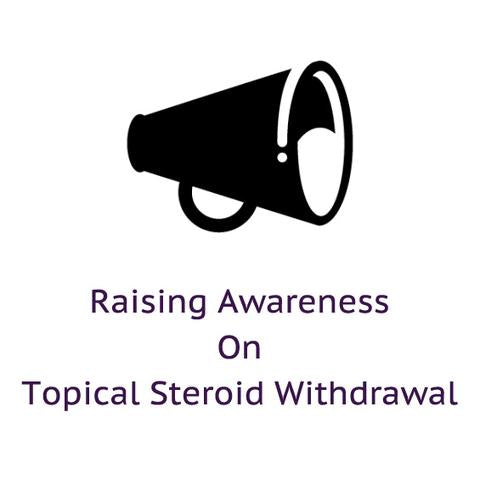Topical Corticosteroids are the first line of treatment for many skin conditions including Atopic Dermatitis (Eczema) and Psoriasis. It is generally regarded that a topical steroid is a safe treatment option both in short-term daily use and the long-term intermittent use. However, in recent years, there have been questions and concerns about the adverse effect of chronic topical steroid use. Topical steroid withdrawal syndrome or addiction has been described, but it is not widely recognized by clinicians.

In 2015, a panel of eczema experts and dermatologists conducted a thorough literature review on the prevalence of topical steroid withdrawal in patients with atopic dermatitis and other skin conditions. After an extensive literature search, 34 clinical studies were selected for detailed analysis. The 34 studies had a total of 1206 patients. Majority of the patients in that series were woman (81%) who used topical steroids to treat eczema, cosmetic use, pigment disorder, facial rash and other skin conditions. Nearly 97% of the patients used the product on their face and 2.3% patients on their genital area. Most of patient used mid (39%) to high (62%) potency steroids. A significant portion of the patients (85%) used to steroids for more than a year.
The most common reported symptoms were burning, stinging, pain and itching, which are exacerbated with sun or heat. The most common clinical sign was redness, and it is not uncommon to see a sharp cutoff between the red and normal appearing skin. In addition, a significant number of the patients had papules/ nodules (61%), pustules (47%), swelling (43%), dryness and cracked skin (41%), dilation of the blood vessels (35%), subsequent peeling of the skin (33%). A small percentage of patient experienced oozing /crusting of the skin.
Treatment options described in the series included
- Immediate discontinue the use of a topical steroid
- oral antibiotics including doxycycline, tetracycline
- antihistamine for
- icing cool compression
- short-term oral steroids, followed by slow and gradual taper of topical steroids
- ultraviolet radiation
- analgesics, tranquilizers
Bottom line, topical steroid withdrawal syndrome is not a very well studied entity. Treatment options may be limited. Additional research is needed to understand the clinical presentations. Many patients who are currently suffering from this syndrome are urgently looking for solutions and cure. Hopefully, this brief clinical review can raise awareness and pave the way for more collaborative research.
We hope this blog was helpful. Please share it with your friends. If you wish to read future articles on attaining healthier skin, please subscribe to our newsletter. If you have comments or suggestions for future blog topics, please contact us.



